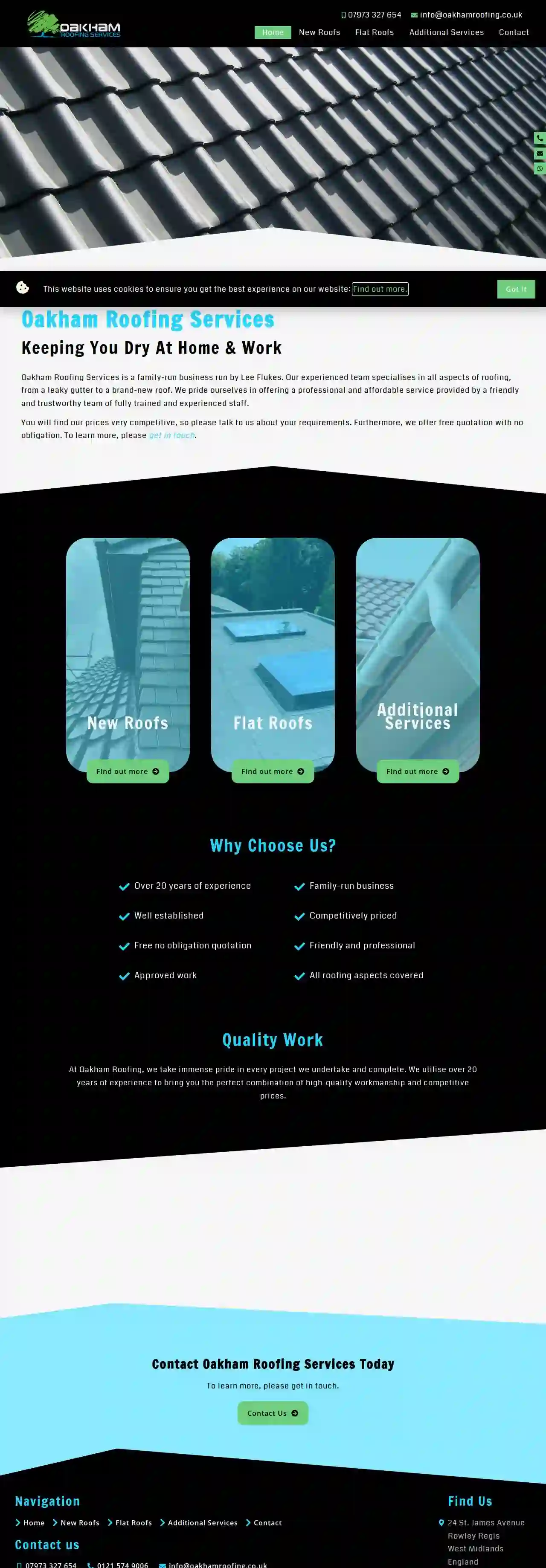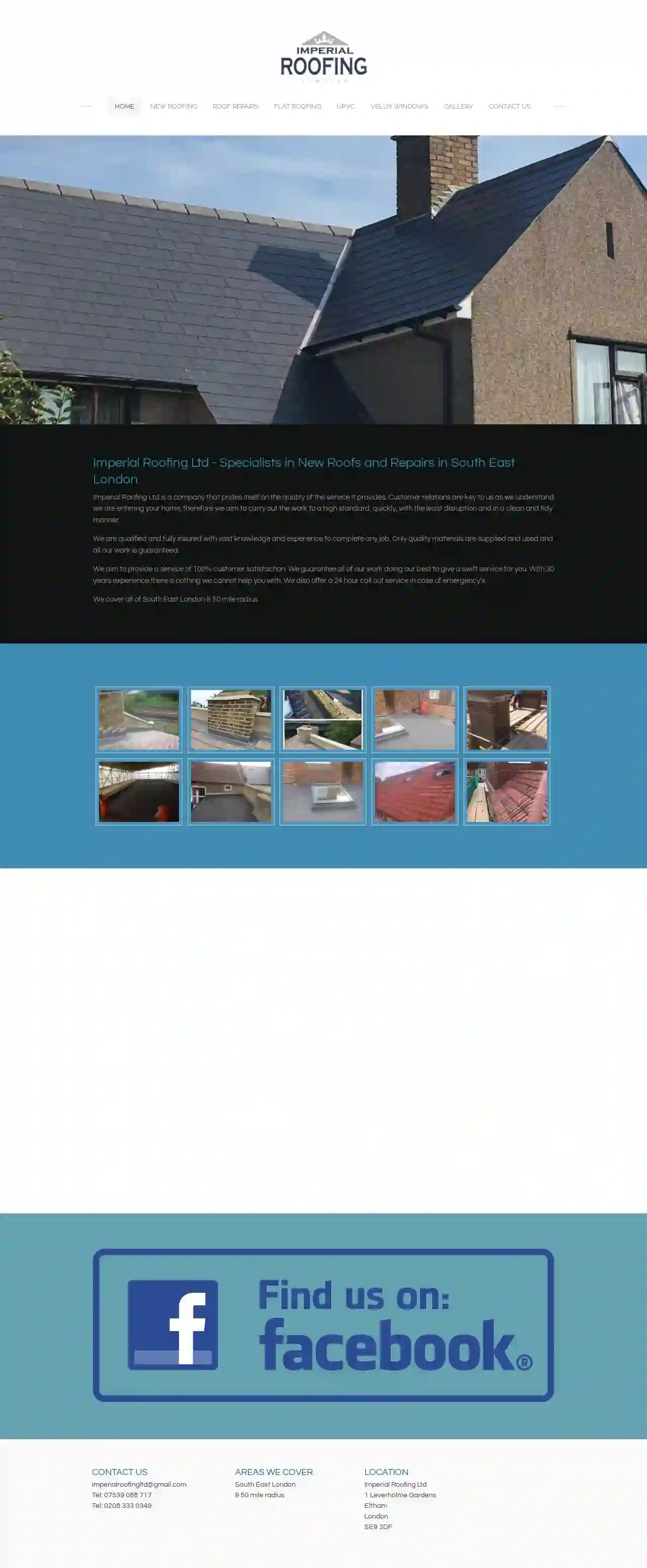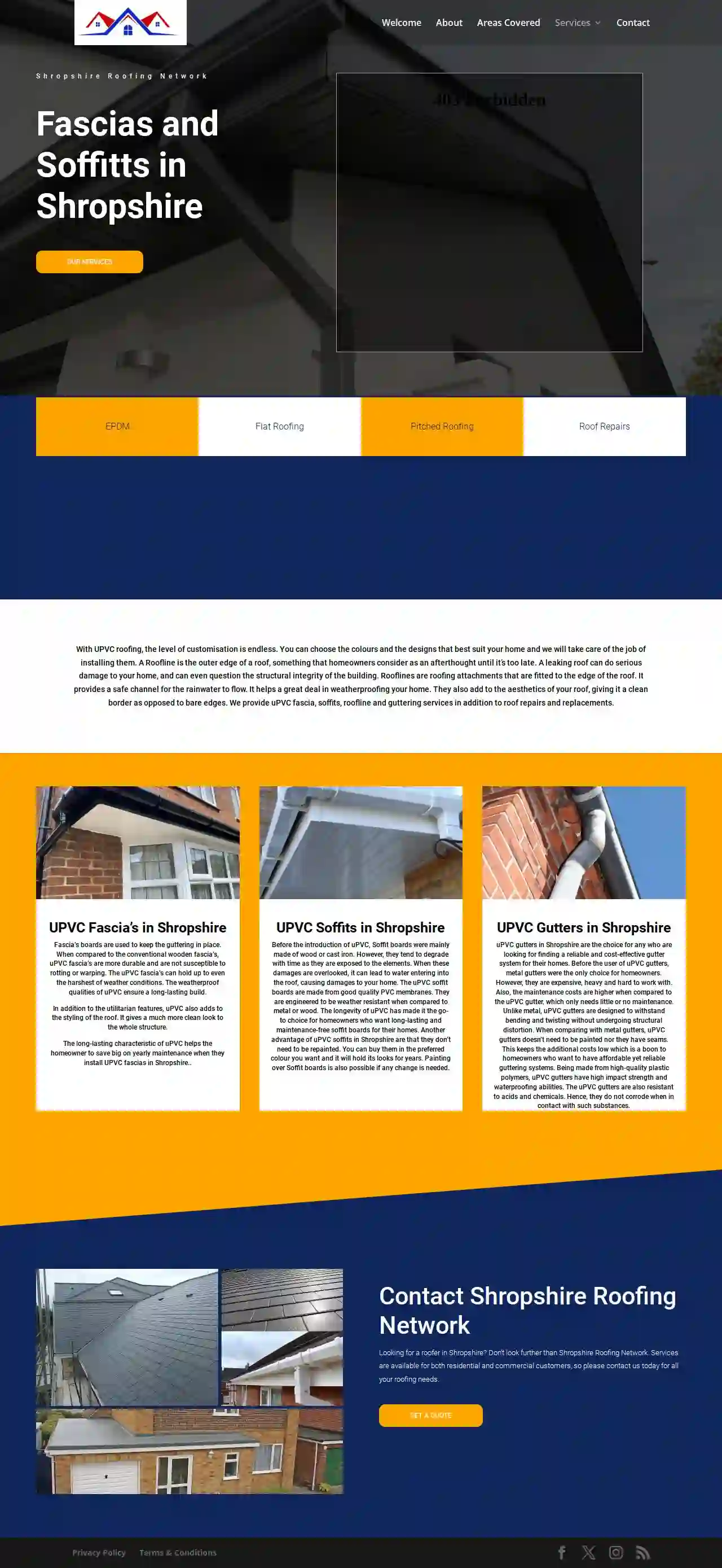Roofing Companies Kearsley
Top Roofing Companies in Kearsley
Get multiple Roofers quotes for your project today! Compare profiles, reviews, accreditations, portfolio, etc... and choose the best deal.

North West Roofing Supplies Ltd | St Helens
4.446 reviewsBurnley Depot, 38 Jockey St, Burnley, Lancashire, BB11 5ET, GBWelcome to North West Roofing Supplies, the UK's leading roofing merchant. We are a friendly and expertly delivered roofing supply centre, with a vast range of products available across all our branches. With national freight services, we can deliver nationally at very competitive rates. Our network of branches throughout the North West of England enables us to offer a fantastic delivery service to the local area and beyond. We work with various different brands, including trusted experts since 2001. Our reputation is built on quality products, supplying only the biggest brands, and quality service, with customers just keeping coming back. We have 1000's of items in stock across all our branches, so please don't hesitate to send any enquires though to our highly experienced staff to quote you on any materials you require.
- Services
- Why Us?
- Gallery
Get Quote
H2O Roofing and Building
53 reviews400 Thames Valley Park Drive, Reading, RG6 1PT, GBH2O Roofing & Building is a family-run business based in Berkshire with over 20 years of experience providing reliable roofing and driveway services across Berkshire, Oxfordshire, and Wiltshire. We handle everything from installations and maintenance to simple repairs, catering to both domestic and commercial clients. No project is too big or too small for us. Our mission is to be trustworthy, customer-oriented, and deliver top-quality workmanship. We pride ourselves on providing individual attention to each customer, meeting project deadlines, and offering 24/7 availability. We are fully qualified and insured, and our commitment to unparalleled customer service and competitive quotes can often save you thousands.
- Services
- Why Us?
- Accreditations
- Our Team
- Testimonials
- Gallery
Get Quote
Boardman Roofing
5108 reviews143 Station Rd, Pendlebury, M27 6BU, GBBoardman Roofing, located in Pendlebury, Manchester, is a trusted name in the roofing industry. Our dedicated team of skilled professionals ensures your roofing needs are met with precision and care. We take pride in our craftsmanship, offering reliable solutions that protect your home for years to come. Choose Boardman Roofing for top-tier roofing services you can depend on. For years, our quality workmanship has earned the trust of hundreds in Pendlebury and Manchester. Join our satisfied customers and experience excellence. Boardman Roofing boasts decades of experience and a team of skilled experts. We deliver top-notch roofing solutions with a proven track record of excellence.
- Services
- Why Us?
- Testimonials
- Gallery
Get Quote
St Helens Roofing
3.54 reviewsGBSt Helens Roofing is one of the largest roofing companies in St Helens, covering the North West and surrounding areas. With over 25 years of experience in the roofing industry, they have established themselves as one of the best roofing companies in the area. They provide a wide range of quality roofing services, including conservatory roof conversions. Their team of highly skilled roofers and conservatory roof converters are ready to help customers. The company's success comes from developing strong relationships with customers and suppliers, allowing them to provide quality roofs every time. When you choose St Helens Roofing, they will arrange a free no-obligation appointment with a professional roofing expert. They will discuss your project and how their process works before measuring up your property.
- Services
- Why Us?
- Gallery
Get Quote
OAKHAM ROOFING SERVICES
24 St. James Avenue, Rowley Regis, B65 8AH, GBOakham Roofing Services is a family-run business run by Lee Flukes. Our experienced team specialises in all aspects of roofing, from a leaky gutter to a brand-new roof. We pride ourselves in offering a professional and affordable service provided by a friendly and trustworthy team of fully trained and experienced staff.You will find our prices very competitive, so please talk to us about your requirements. Furthermore, we offer free quotation with no obligation. To learn more, please get in touch.
- Services
- Why Us?
- Gallery
Get Quote
Imperial roofing limited
4.610 reviews1 Leverholme Gardens, Eltham, SE9 3DF, GBImperial Roofing Ltd is a company that prides itself on the quality of the service it provides. Customer relations are key to us as we understand we are entering your home, therefore we aim to carry out the work to a high standard, quickly, with the least disruption and in a clean and tidy manner. We are qualified and fully insured with vast knowledge and experience to complete any job. Only quality materials are supplied and used and all our work is guaranteed. We aim to provide a service of 100% customer satisfaction. We guarantee all of our work doing our best to give a swift service for you. With 30 years experience there is nothing we cannot help you with. We also offer a 24 hour call out service in case of emergency's. We cover all of South East London & 50 mile radius.
- Services
- Why Us?
- Gallery
Get Quote
GOLDHAWK ROOFING & BUILDING
54 reviewsOffice 33, 151 Trafalgar Road, London, SE10 9TX, GBGoldhawk Roofing & Building Ltd is a family-run business specializing in roofing and building services. With over twenty years of experience, they've built a strong reputation for meeting and exceeding customer expectations. They handle projects ranging from small domestic work to larger commercial ventures, always maintaining the highest standards and competitive pricing. Goldhawk prioritizes quality materials, guarantees their work, and is fully insured. Their team is qualified, experienced, and dedicated to providing a professional and reliable service.
- Services
- Why Us?
- Testimonials
- Gallery
Get Quote
Severn Roofing Shropshire
58 reviewsGBSevern Roofing Shropshire is a team of professional roofers dedicated to providing top-quality domestic and commercial roofing solutions throughout Shropshire. With years of experience in the industry, we offer a comprehensive range of services, from new roof installations and repairs to general maintenance. Our team is committed to delivering exceptional results, using only the best materials and equipment to ensure long-lasting and reliable solutions for our clients. We prioritize safety and customer satisfaction, ensuring a smooth and stress-free experience from start to finish. Contact us today for a free no-obligation quotation and let us take care of all your roofing needs.
- Services
- Why Us?
- Gallery
Get Quote
Paul Nunn Roofing Ltd
51 reviewsWoodlarks Flempton Bridge Carr West Stow Bury St Edmunds Suffolk, Bury St Edmunds, IP28 6ER, GBPaul Nunn Roofing Limited has over 25 years of roofing contractor experience and are fully accredited to work on numerous types of roofing projects including roof tiling, roof repairs, re-tiling and roof renovations from their base in Bury St Edmunds, Suffolk. Establishing close partnerships with local construction firms, housing associations, surveyors and architects, has allowed us to meet the increasing demand for quality craftsmanship on commercial and domestic roofing projects in towns such as Bury St Edmunds, Ipswich, Cambridge and Newmarket. The Paul Nunn Roofing team also works in areas that cover Suffolk, Norfolk, Cambridgeshire and Essex. Our team of operatives hold valid training certificates, and with their combined experience complete roofing work across a range of projects from house new builds, extensions to historic churches. This typically includes: Tiling, Slating, Re-roofing, Lead work, Renovation, Roof repairs, Maintenance. Please browse our site to find out more or contact us if you require any further information. Below is a short video showing our recent work completed on the roof for Stansfield Church in Suffolk.
- Services
- Why Us?
- Accreditations
- Gallery
Get Quote
The Professional Roofline Co
52 reviews123 Main Street, Shrewsbury, SY1 1AA, GBShropshire Roofing Network is a team of professional roofers providing a wide range of roofing services in Shropshire, including roof repairs, flat roofing, guttering, fascias & soffits, and more. With years of experience, our members are dedicated to delivering high-quality workmanship and excellent customer service. Whether you're a homeowner or a business owner, we can help you with all your roofing needs. Our services include EPDM, flat roofing, pitched roofing, and roof repairs. We also offer UPVC fascia, soffit, and guttering services. Our team is committed to providing a safe and reliable roofing solution for your home or business.
- Services
- Why Us?
- Accreditations
- Our Team
- Testimonials
- Gallery
Get Quote
Over 12,314+ Roofers onboarded
Our roofing experts operate in Kearsley & surrounding areas!
Roofyng.co.uk has curated and vetted Top Roofers in and around Kearsley. Find a top & reliable business today.
Frequently Asked Questions About Roofing Companies
- Experience: 'How long have you been in business, and what experience do you have with my type of roof?'
- Licensing and insurance: 'Are you licensed and insured, and can I see proof of coverage?'
- Warranties: 'What warranties do you offer on your work and the materials used?'
- References: 'Can you provide references from past clients?'
- Project Timeline: 'What is the estimated timeline for completing the project?'
- Payment Terms: 'What are your payment terms, and do you require a deposit?'
- Communication: 'How will you keep me updated on the project's progress?'
- Cleanup: 'What steps will you take to protect my property during the project and ensure proper cleanup afterward?'
How often should I clean my gutters?
What is the difference between a roofer and a general contractor?
Roofer: Specializes in roof installations, repairs, and replacements. They have expertise in roofing materials, techniques, and safety practices specific to roofing.
General Contractor: Oversees and manages entire construction projects, including hiring and coordinating subcontractors, such as roofers, electricians, plumbers, etc. They handle overall project planning, scheduling, and budgeting.
For roofing projects, it's generally best to hire a roofing contractor who specializes in roof work.
What questions should I ask a roofing contractor?
What is fascia, and why is it important?
How often should I clean my gutters?
What is the difference between a roofer and a general contractor?
Roofer: Specializes in roof installations, repairs, and replacements. They have expertise in roofing materials, techniques, and safety practices specific to roofing.
General Contractor: Oversees and manages entire construction projects, including hiring and coordinating subcontractors, such as roofers, electricians, plumbers, etc. They handle overall project planning, scheduling, and budgeting.
For roofing projects, it's generally best to hire a roofing contractor who specializes in roof work.
What questions should I ask a roofing contractor?
- Experience: 'How long have you been in business, and what experience do you have with my type of roof?'
- Licensing and insurance: 'Are you licensed and insured, and can I see proof of coverage?'
- Warranties: 'What warranties do you offer on your work and the materials used?'
- References: 'Can you provide references from past clients?'
- Project Timeline: 'What is the estimated timeline for completing the project?'
- Payment Terms: 'What are your payment terms, and do you require a deposit?'
- Communication: 'How will you keep me updated on the project's progress?'
- Cleanup: 'What steps will you take to protect my property during the project and ensure proper cleanup afterward?'